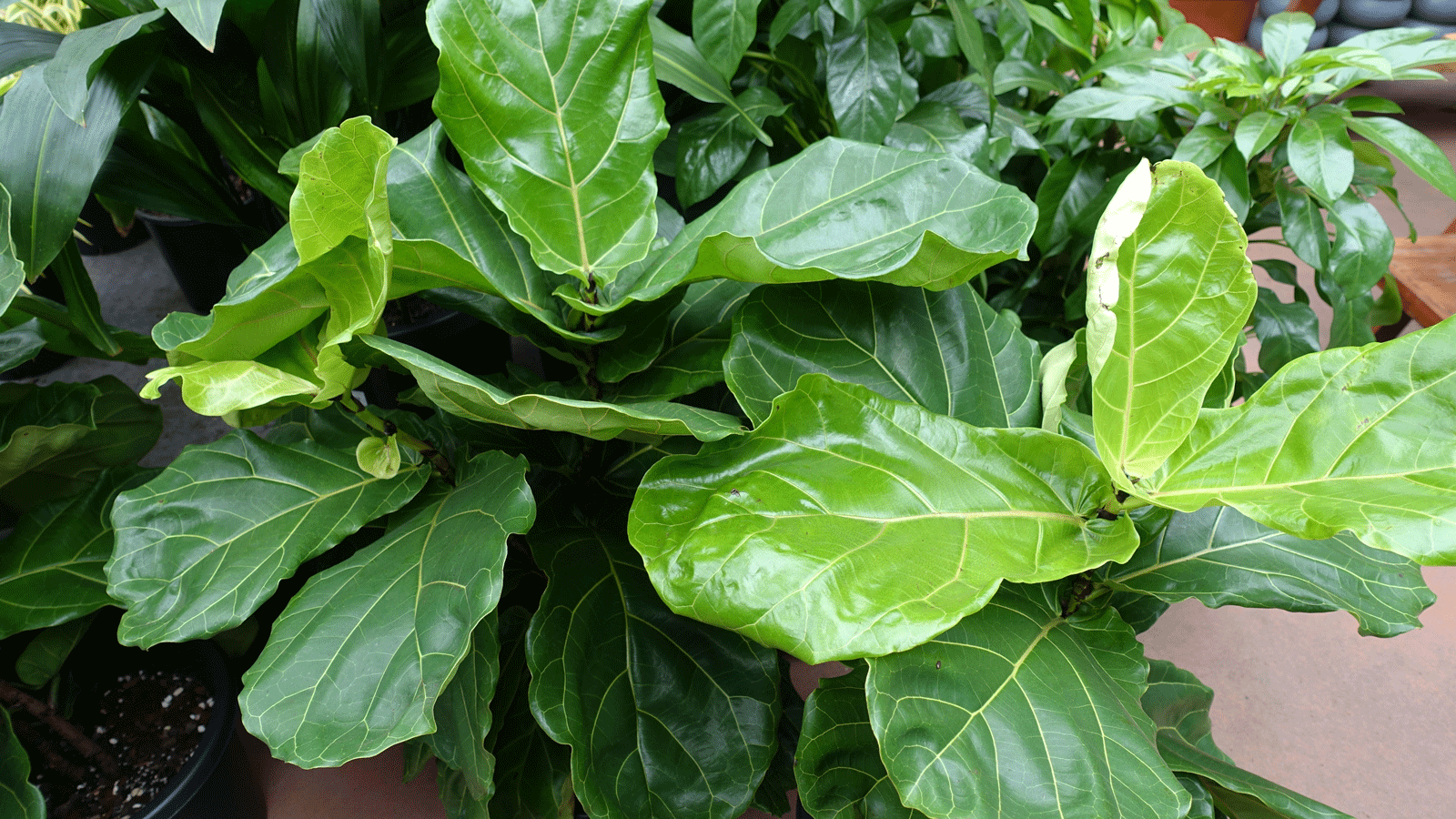Living wall ideas — creative ways to plant a green wall garden
Living wall ideas are springing up over vertical surfaces everywhere, to keep buildings cool, improve air quality, reduce noise and attract wildlife
- (opens in new tab)
- (opens in new tab)
- (opens in new tab)
- Sign up to our newsletter Newsletter


Looking for living wall ideas? It’s never been easier to create a living wall in your garden.
Living, or green, walls, were once the domain of temporary, designer installations. Now, pioneering commercial sites, where tapestries of plants can be seen adorning the sides of prestigious hotels, shops and office buildings, have become the must-have decorative design solution for residential gardens.
Colorful, verdant and providing aesthetic and ecological benefits, they make use of vertical surfaces for planting. They are a particularly useful garden idea where space may be limited, but are worthy as an impactful design feature in their own right.
A natural and growing garden decor idea, in urban areas living walls can also help keep buildings cool and reduce noise pollution, as well as provide a habitat for wildlife, too. They also help keep rain water away from exterior walls and provide insulation.
To create these vertical gardens, plants are rooted into a structure which is then attached to an interior, exterior or freestanding wall.
Systems can range from something as simple as plant pots hung on a vertical wall, to highly sophisticated modular, hydroponic panels, where all the water and nutrient requirements of the plants are precision delivered and monitored electronically.
Living wall ideas
1. Make your living wall a focal feature
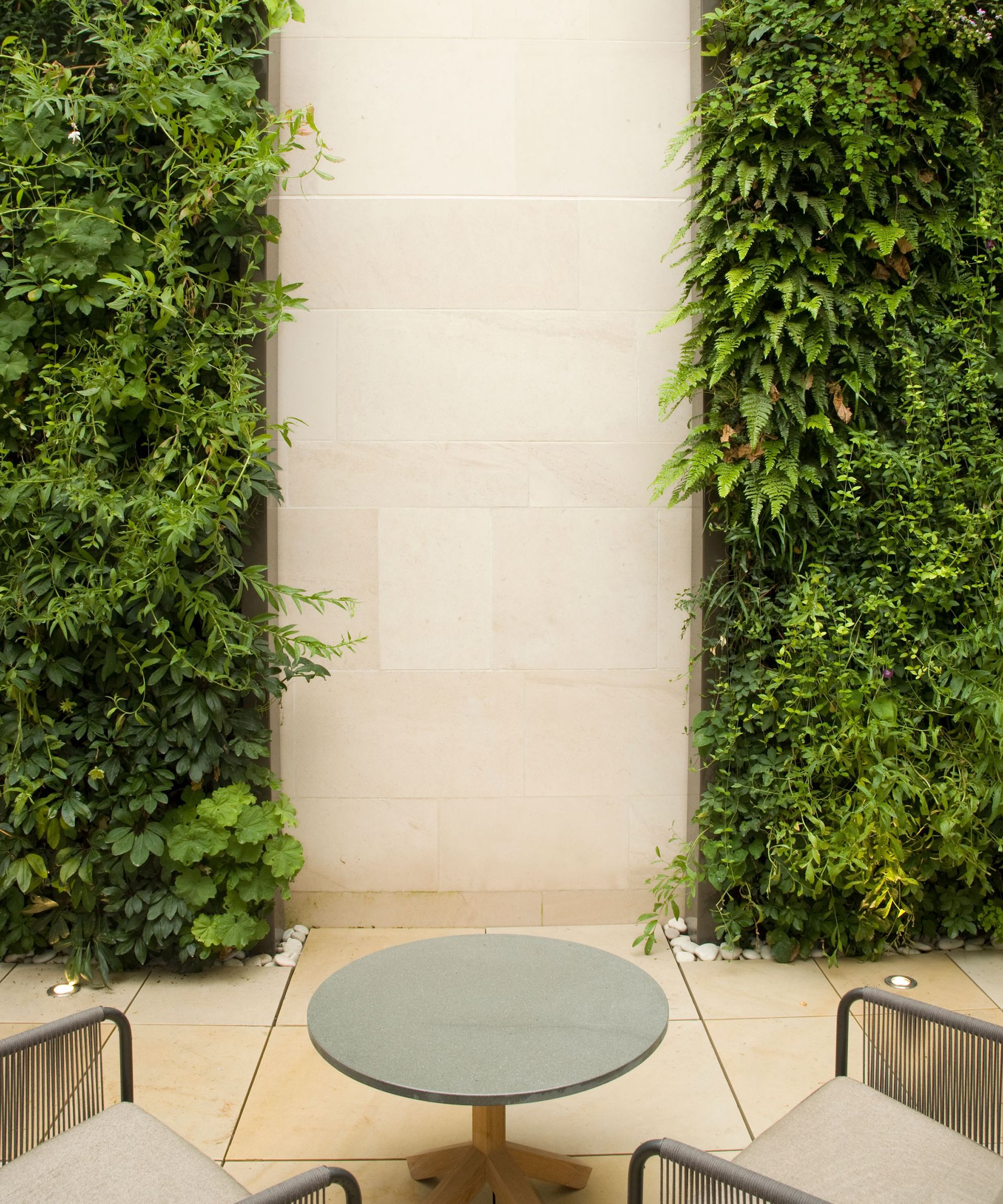
Luxuriant and dramatic, these vertical garden wall ideas also help to insulate buildings, improve air quality and attract birds and insects to urban environments.
Here, modular panels are pre-planted with plugs on a support structure, which allows walls of all sizes to be covered with greenery.
2. Take it indoors
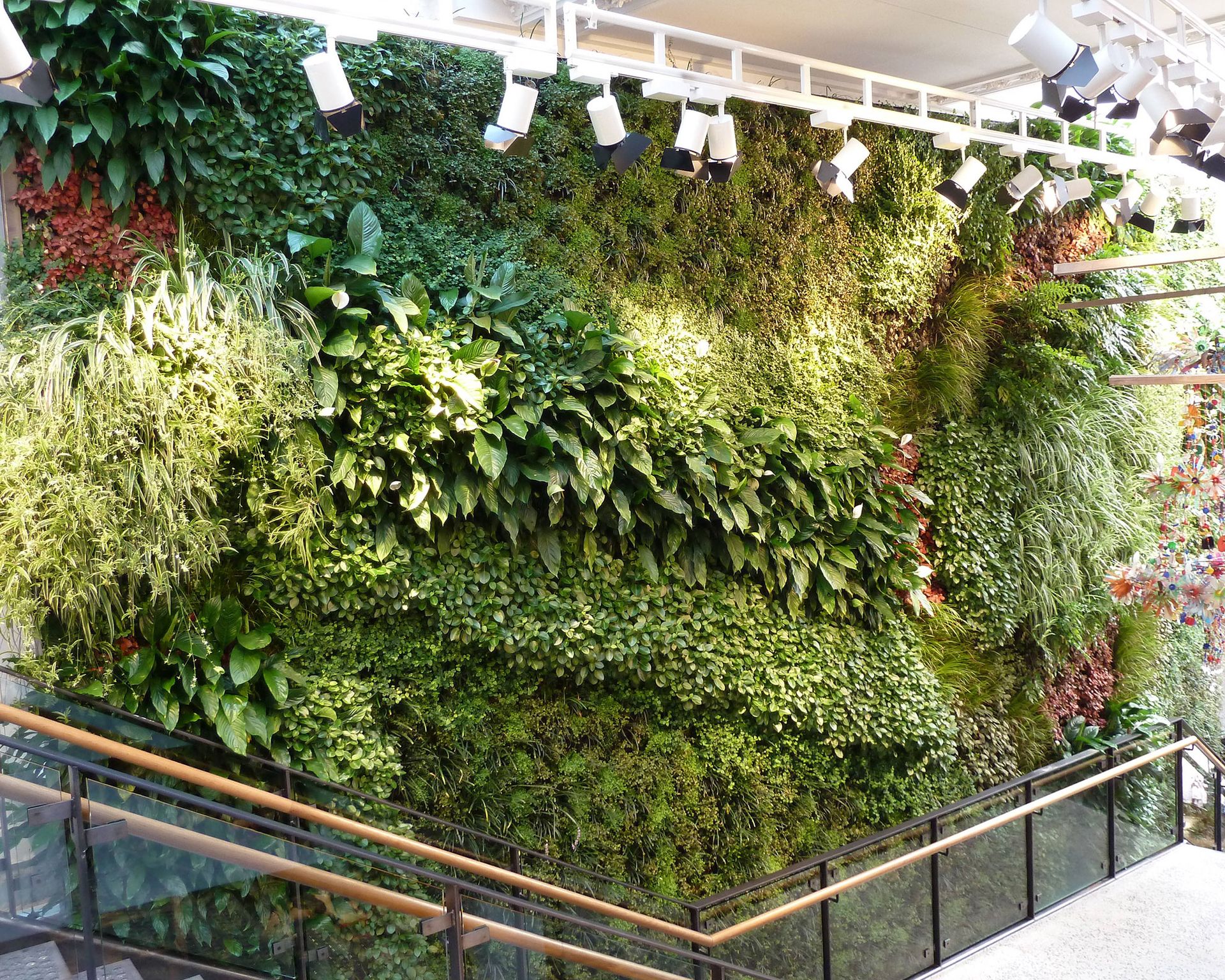
This striking living wall, which includes the fern Asplenium nidus obtusifolia ‘Crispy Wave’, Peperomia obtusifolia, Pilea cadiereiand Fittonia, was created for Anthropologie by Biotecture, biotecture.uk.com.
Biotecture offers a sophisticated and highly precise, monitored irrigation system. Walls are pre-grown vertically offsite and installed semi-mature, creating instant visual impact.
3. Create a vertical attraction

Garden designed by Stephen Woodhams, stephenwoodhams.com
A limited palette of carefully selected plants (Adiantum capillus-veneris, Asplenium scolopendrium, Carex Irish Green, Hebe pagei ‘Sutherlandii’, Heuchera ‘Marmalade’, Lavandula ‘Hidcote’, Polypodium vulgare, Polystichum polyblepharum, Soleirola solierolii, Uncinia rubra, Vinca minor Alba) are woven together to create texture and pattern.
4. Take inspiration from nature
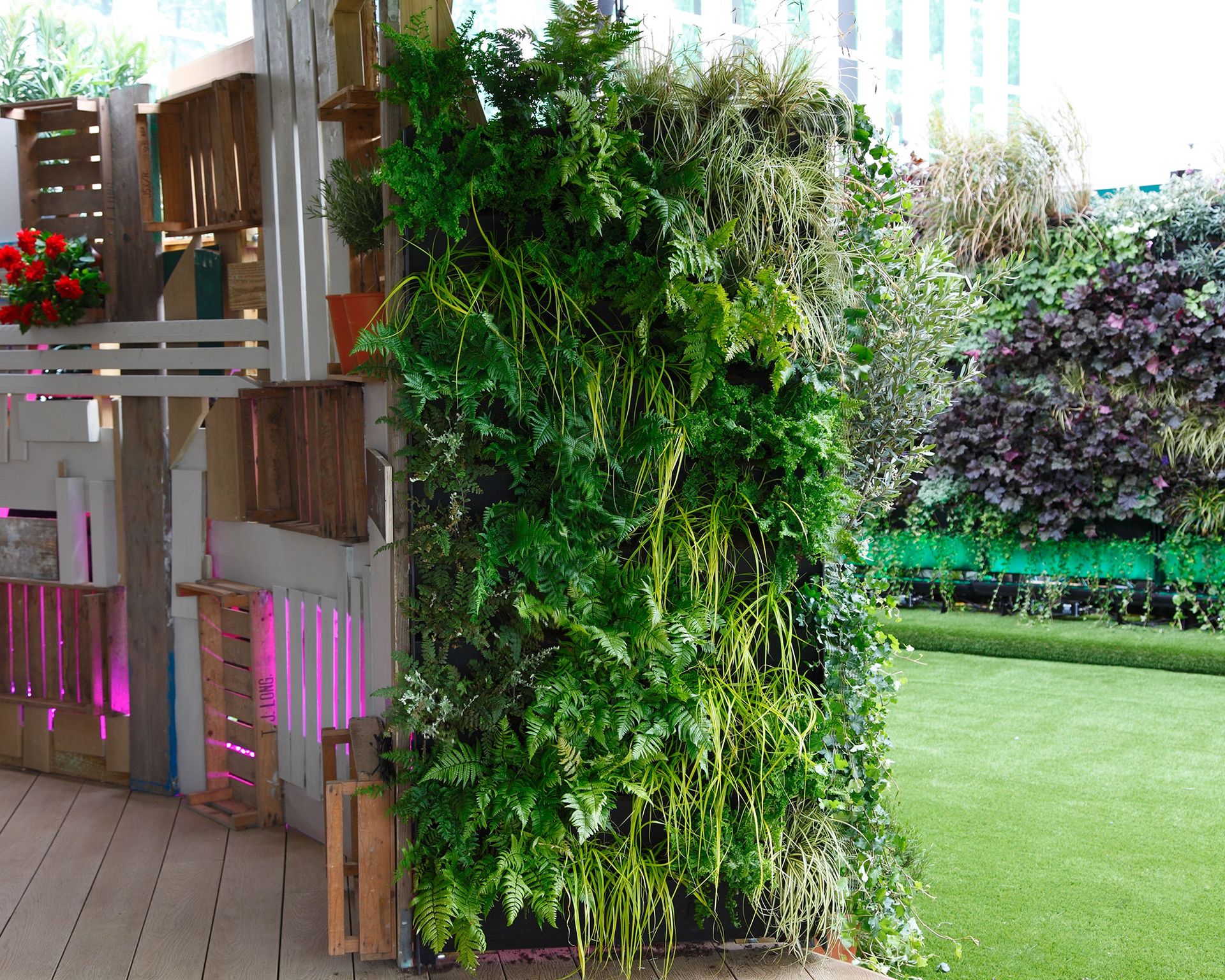
Roof garden, John Lewis
'There are lots of green wall systems on the market, but I think the units by Treebox are among the best. They are made up of deep pockets that provide plenty of space for compost and plant roots.
I would also advise installing an irrigation system to ensure your plants are well watered from top to bottom. In this wall, I have chosen a range of leafy and flowering plants, including heucheras, Helianthemum (rock roses) and thyme,' says garden designer Tony Woods.
5. Use the right planting system
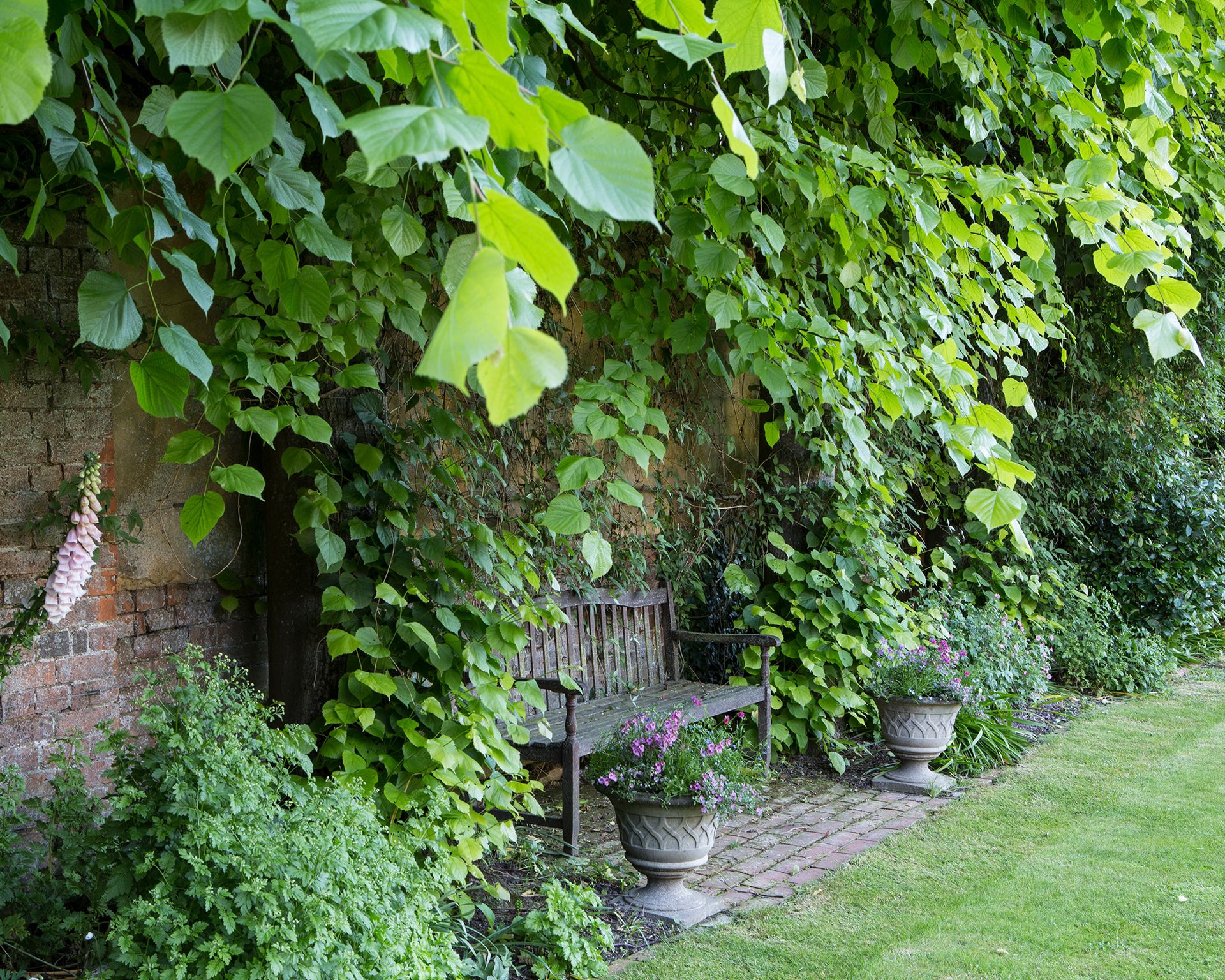
Successful systems for living walls and vertical gardens need to provide an upright support, a substrate for plants to root into and a means of meeting all their water and nutrient needs, usually via drip-irrigation.
Many garden designers and all-in-one companies offer a range of solutions.
6. Pick the perfect spot for a living wall
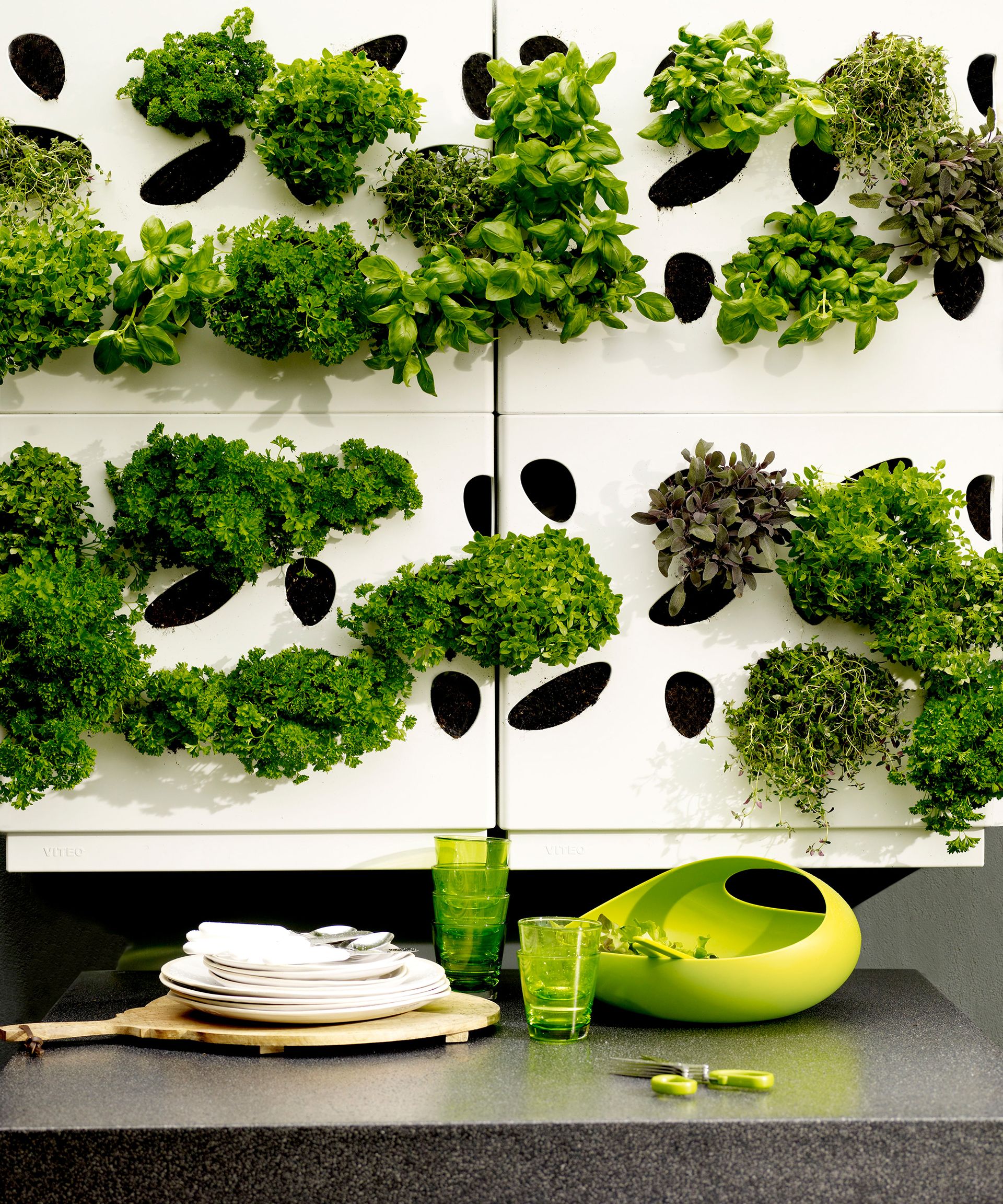
When considering how to plan a garden that incorporates a living wall, it's important to install your green wall on a sunny or partly-shaded surface, where the widest range of plants will thrive.
We suggest using leafy evergreens for year-round cover, such as Siberian bugloss (Brunnera), small ferns, heucheras and sedges, or plant lettuces, thyme, chives, marjoram and strawberries for an edible wall or sensory garden idea.
7. Use the best plants for your garden wall

In colors ranging from dark burgundy to lime green and pink, the must-have Coral Bells (Heuchera) is ideal for sun or part-shade.
Its compact size means it will never outgrow its wall planter and the overwintering leaves provide continuous color. Just snip off old foliage in spring to make way for new growth.
8. Opt for drought-tolerant plants
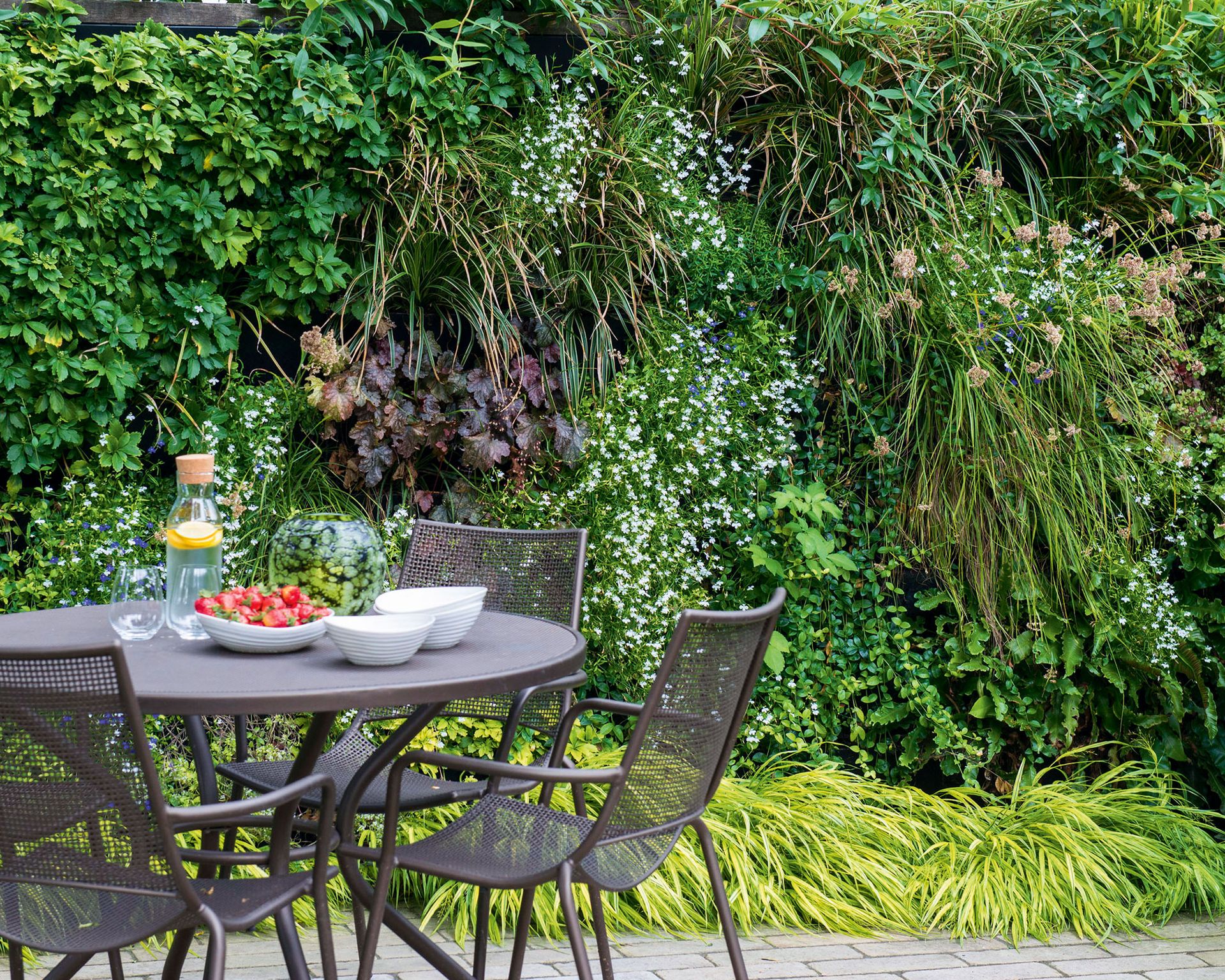
Carex is another excellent addition to a living wall. This drought-tolerant sedge has evergreen grass-like leaves and will provide color all year round on your wall.
It also produces dainty white flower spikes in spring, and will grow happily in the shadier areas at the bottom of a living wall, making it a good choice if you're looking for garden shade ideas, too.
The striped Carex morrowii ‘Ice Dance’ is one of the best.
How do you decorate a living wall?
Where space is tight, planting vertical surfaces offers a great way to introduce color into you garden and is a handy idea for small gardens. Living wall units are an easy solution, covering surfaces with flowers and foliage to disguise fences, sheds, or even your bins.
Add pollinator-friendly flowers and your living wall will feed the bees, too, or try edible plants for fresh ingredients right outside your door.
What are the best plants for a living wall?
A large range of herbaceous perennials, grasses, small shrubs, herbs and even fruit and vegetables can be used on your living wall idea.
Be creative and experimental. Try including scented plants, seasonal flowers and bulbs, but check your chosen plants will suit the aspect, microclimate and conditions of your living wall.
- Adiantum (Maidenhair fern)
- Carex oshimensis 'Evergold' (sedge)
- Saxifraga × urbium (London pride)
- Pachysandra terminalis (Japanese spurge)
- Fragaria ‘Mara des Bois’ (Strawberry)
- Pelargonium peltatum (Ivy-leaved geranium)
- Liriope muscari (Lilyturf)
- Tiarella cordifolia (Foam flower)
- Heuchera 'Purple Petticoats' Vinca minor (Lesser periwinkle)
- Galanthus (Snowdrops)

Jennifer is the Digital Editor at Homes & Gardens. Having worked in the interiors industry for a number of years, spanning many publications, she now hones her digital prowess on the 'best interiors website' in the world. Multi-skilled, Jennifer has worked in PR and marketing, and the occasional dabble in the social media, commercial and e-commerce space. Over the years, she has written about every area of the home, from compiling design houses from some of the best interior designers in the world to sourcing celebrity homes, reviewing appliances and even the odd news story or two.
-
-
 Why is my fiddle leaf fig dropping leaves? Expert reveal the common causes
Why is my fiddle leaf fig dropping leaves? Expert reveal the common causesThese are the key signs to spot so you can take action and stop this leaf drop problem in its tracks
By Sarah Wilson • Published
-
 Vitamix E310 Explorian Blender review: is Vitamix's basic blender worth it?
Vitamix E310 Explorian Blender review: is Vitamix's basic blender worth it?We put the Vitamix E310 Explorian to the test to see if this entry-level blender is as good as the rest of the brand
By Helen McCue • Published
